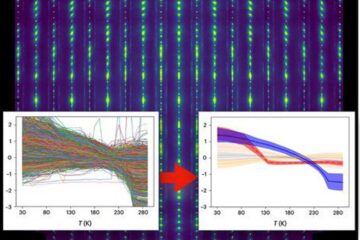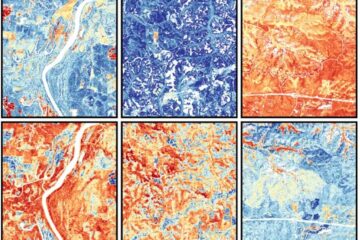Taming thermonuclear plasma with a snowflake

Physicists working on the National Spherical Torus Experiment (NSTX) at the Princeton Plasma Physics Laboratory are now one step closer to solving one of the grand challenges of magnetic fusion research—how to reduce the effect that the hot plasma has on fusion machine walls (or how to tame the plasma-material interface).
Some heat from the hot plasma core of a fusion energy device escapes the plasma and can interact with reactor vessel walls. This not only erodes the walls and other components, but also contaminates the plasma—all challenges for practical fusion. One method to protect machine walls involves divertors, chambers outside the plasma into which the plasma heat exhaust (and impurities) flow. A new divertor concept, called the “snowflake,” has been shown to significantly reduce the interaction between hot plasma and the cold walls surrounding it.
Strong magnetic fields shape the hot plasma in the form of a donut in a magnetic fusion plasma reactor called a tokamak. As confined plasma particles move along magnetic field lines inside the tokamak, some particles and heat escape because of instabilities in the plasma. Surrounding the hot plasma is a colder plasma layer, the scrape-off layer, which forms the plasma-material interface. In this layer, escaped particles and heat flow along an “open” magnetic field line to a separate part of the vessel and enter a “divertor chamber.” If the
plasma striking the divertor surface is too hot, melting of the plasma-facing components and loss of coolant can occur. Under such undesirable conditions, the plasma-facing component lifetime would also be an issue, as they would tend to wear off too quickly.
While the conventional magnetic X-point divertor concept has existed for three decades, a very recent theoretical idea and supporting calculations by Dr. D.D. Ryutov from Lawrence Livermore National Laboratory have indicated that a novel magnetic divertor—the “snowflake divertor”—would have much improved heat handling characteristics for the plasma-material interface. The name is derived from the appearance of magnetic field lines forming this novel magnetic interface.
This magnetic configuration was recently realized in NSTX and fully confirmed the theoretical predictions. The snowflake divertor configuration was created by using only two or three existing magnetic coils. This achievement is an important result for future tokamak reactors that will operate with few magnetic coils. Because the snowflake divertor configuration flares the scrape-off layer at the divertor surface, the peak heat load is considerably reduced, as was confirmed by the divertor heat flux on NSTX. The plasma in the snowflake divertor, instead of heating the divertor surface on impact, radiated the heat away, cooled down and did not erode the plasma-facing components as much, thus extending their lifetime. Plasma TV images show more divertor radiation in the snowflake divertor plasmas in comparison with the standard plasmas. Importantly, the snowflake divertor did not have an impact on the high performance and confinement of the high-temperature core plasma, and even reduced the impurity contamination level of the main plasma.
These highly encouraging results provide further support for the snowflake divertor as a viable plasma-material interface for future tokamak devices and for fusion development applications.
Media Contact
More Information:
http://www.utexas.eduAll latest news from the category: Physics and Astronomy
This area deals with the fundamental laws and building blocks of nature and how they interact, the properties and the behavior of matter, and research into space and time and their structures.
innovations-report provides in-depth reports and articles on subjects such as astrophysics, laser technologies, nuclear, quantum, particle and solid-state physics, nanotechnologies, planetary research and findings (Mars, Venus) and developments related to the Hubble Telescope.
Newest articles

Machine learning algorithm reveals long-theorized glass phase in crystal
Scientists have found evidence of an elusive, glassy phase of matter that emerges when a crystal’s perfect internal pattern is disrupted. X-ray technology and machine learning converge to shed light…

Mapping plant functional diversity from space
HKU ecologists revolutionize ecosystem monitoring with novel field-satellite integration. An international team of researchers, led by Professor Jin WU from the School of Biological Sciences at The University of Hong…

Inverters with constant full load capability
…enable an increase in the performance of electric drives. Overheating components significantly limit the performance of drivetrains in electric vehicles. Inverters in particular are subject to a high thermal load,…





















